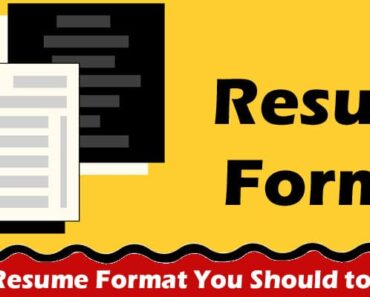When it comes to your resume format, it’s important to remember that first impressions count. The way your resume looks – from the font you use to the layout and design – can make a big difference in whether or not you get called in for an interview.
That’s why it’s so important to take the time to format your resume correctly:
1 – Use a professional font.
Your resume should look clean and professional, and using a standard, easy-to-read font is an important part of achieving that look. Some good fonts to consider include Times New Roman, Arial, and Calibri.
2 – Stick to a standard layout.
When it comes to your resume format, simpler is often better. Stick to a standard layout with your name and contact information at the top, followed by a summary statement, then your work experience, education, and skills.
3 – Use white space wisely.
Using white space effectively is a key part of creating a well-formatted resume. Be intentional about how you use spacing to create visual interest and make sure your resume is easy to scan.
4 – Use bullet points sparingly.
Bullet points can be helpful in highlighting important information on your resume, but using too many of them can make your resume look cluttered. Use bullet points sparingly and only when they’re truly necessary.
5 – Use action verbs.
When describing your work experience, use powerful action verbs to make your accomplishments sound even more impressive. Verbs like “managed,” ” oversaw,” ” cultivated,” and ” increased” can all help add impact to your resume.
Formatting your resume correctly is an important part of making a good first impression on potential employers. Keep these tips in mind the next time you’re updating your resume and you’ll be sure to put your best foot forward.
When it comes to writing a resume, there are different formats that you can use. The most common format is the chronological format, which lists your work experience in reverse chronological order. This is the most popular format because it is easy to follow and understand.
Another common format is the functional format, which emphasizes your skills and abilities instead of your work history. This can be a good choice for people who have gaps in their employment history or who are changing careers.
There is also the combination format, which combines elements of both the chronological and functional formats. This can be a good option if you want to highlight both your work history and your skills and abilities.
No matter which format you choose, make sure that your resume is clear, concise, and easy to read. Be sure to proofread it carefully before you send it out. And remember, your resume is just one part of the job search process. You also need to make sure that you have a strong cover letter and interview skills.


